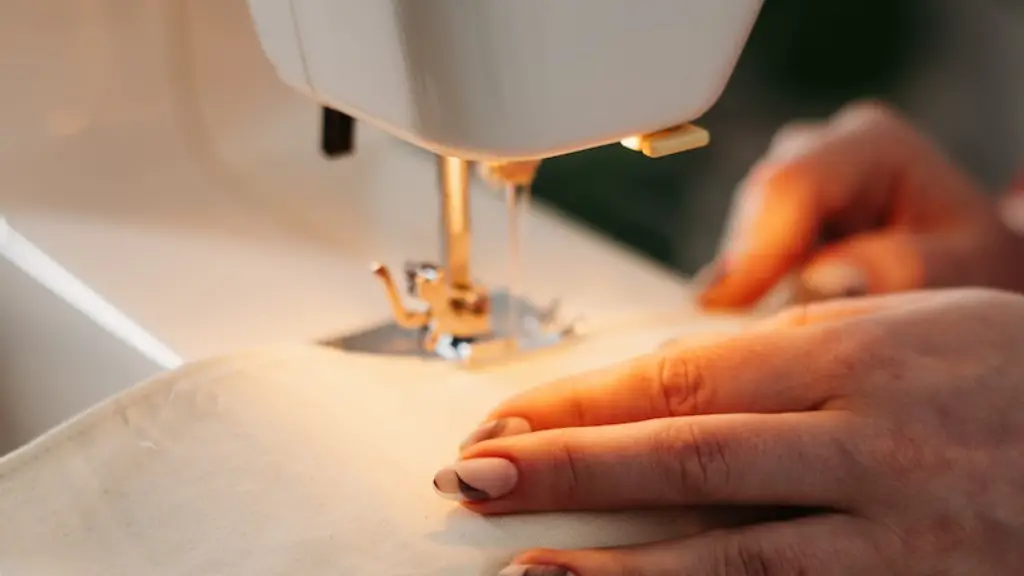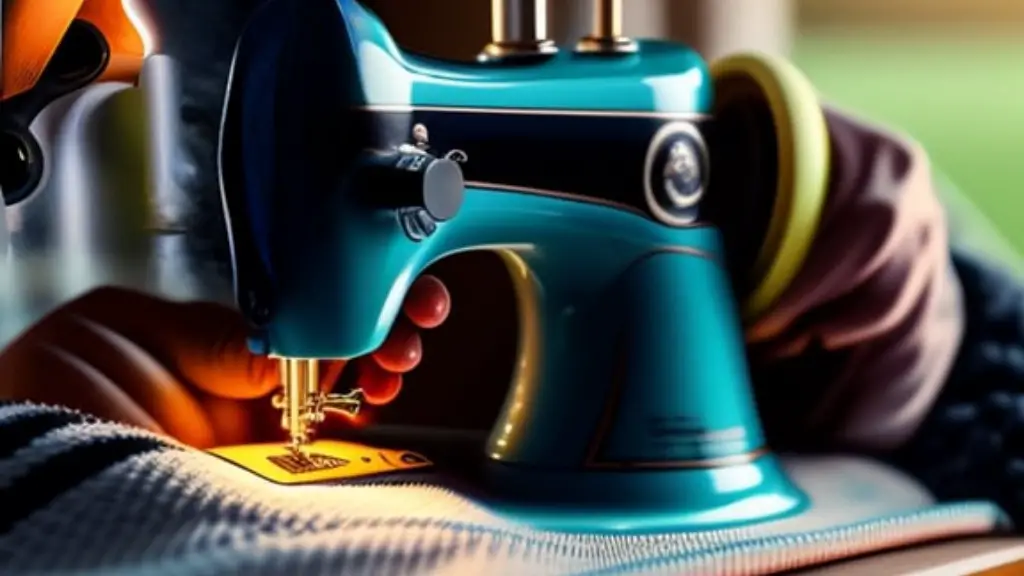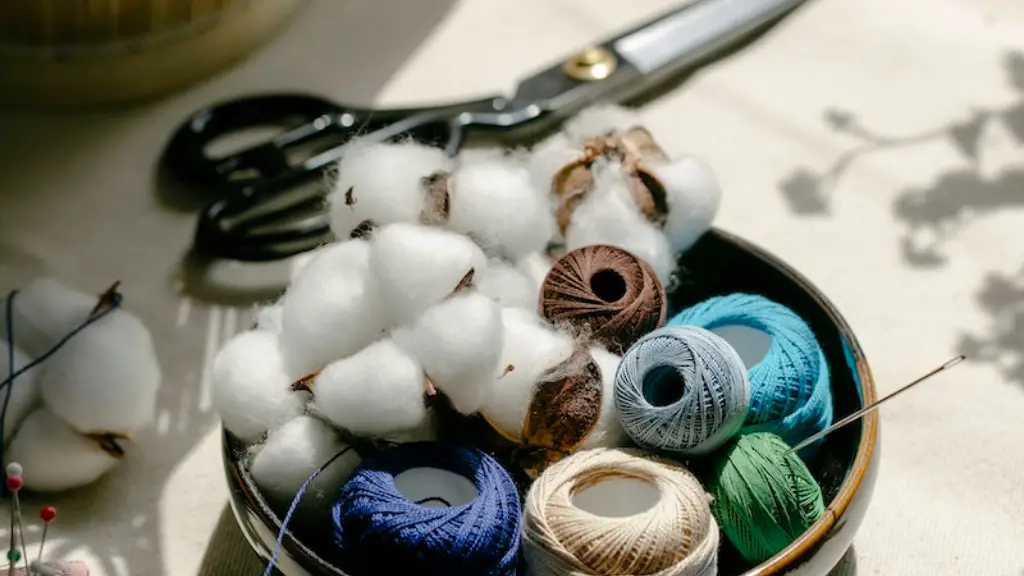Maintenance
Keeping a sewing machine in good condition is essential to guarantee the longevity of the machine and to ensure the quality of the finished products. Regular maintenance will cost less if done regularly and will lead to a machine that continues to perform at an optimal level. Good maintenance of a sewing machine includes the following:
- Clean it regularly. Heat, dirt, and lint can all be damaging to a machine, so it is important to keep the machine clean. This is especially important for a machine that has been used for a long time. Before you begin any maintenance, make sure to unplug it completely. Then, use a soft brush to dust off any lint, dirt, and thread that may be stuck to the machine. Also, make sure to keep your presser foot and bobbin case clean.
- Oil the machine. Oiling the machine will help it function better and move smoothly. It is important to oil the machine in the appropriate places. High-pressure spots, such as the needle plate, feed dogs, and hook, should be oiled more often. Also, make sure to put oil at the ends of all the moving parts, and use a light touch when oiling.
- Check and tighten the screws.Check the screws periodically to make sure they are tightened to the correct specifications. This will help the machine function more smoothly and help avoid costly repairs.
- Keep the machine covered. Keeping the machine covered with a special fabric cover or a plastic cover will help protect it from dust and dirt, which can be damaging to the machine. It will also help keep the machine looking new.
Troubleshooting
The most common problems with sewing machines involve poor or uneven stitching, tension problems, and skipping stitches. To troubleshoot the problem, first double-check the needle’s size and type, check the bobbin and bobbin case for any lint buildup, and check the tension settings. Here are a few tips for troubleshooting common problems:
- If the stitches are not even, make sure the presser foot and needle are aligned correctly. Also, check the tension settings and make sure they are correct.
- If the thread keeps breaking, check if the thread is being wound onto the bobbin evenly. Make sure the bobbin is not full and the thread is not too tight. Also, check that the needle is the correct size and the presser foot is correctly adjusted.
- If the machine is skipping stitches, make sure the needle is the correct size and that the needle is correctly inserted into the machine. Also, check the presser foot for any damage or foreign objects that could be causing the problem.
- If the machine is not sewing properly, make sure the machine is plugged in correctly. Also, check the power cord for any damage or wear and tear. If the power cord is damaged, it may need to be replaced.
Storage
When not in use, it is important to properly store the sewing machine to avoid any mechanical damage or dust buildup. To properly store a sewing machine, first unplug the power cord, then remove the needle and presser foot. Next, dust the machine with a soft brush and make sure the bobbin area is completely free of lint. Finally, cover the machine with a special fabric cover or a plastic cover. This will help protect it from dust and dirt, and will keep the machine looking and working better for longer.
Accessories and Supplies
When caring for a sewing machine, it is important to have the necessary accessories and supplies. Here is a list of essential accessories and supplies that you will need to properly care for your machine:
- Soft, lint-free cloths for dusting
- Oiling solution and applicator
- Screwdrivers, tweezers, and scissors
- Presser foot and bobbin case
- Fabric cover or plastic cover
- Thread (all-purpose, quilting, and embroidery)
- Needles (universal and quilting)
- Specialty stitch plates and cams
Using the Machine
Using a sewing machine can be intimidating if you are a first-time user. Here are a few basic tips to get you started:
- Make sure the machine is in good working order and that all components are properly assembled.
- Read the instruction manual to become familiar with the machine’s features and settings.
- Experiment on scrap fabric to become comfortable with the machine and its features.
- Adjust the presser foot and thread tension for different fabrics.
- Adjust the stitch length and width for different fabrics.
- Choose the correct needle size and type for the fabric.
- Use a walking foot if you are working with thicker fabrics.
Cleaning the Machine
It is important to keep the sewing machine clean to avoid buildup of dust, lint, and thread on the machine. To ensure optimal performance, it is recommended to clean the machine regularly. Here are a few tips for cleaning a sewing machine:
- Unplug the machine completely before cleaning.
- Use a soft, lint-free cloth to gently wipe down the machine, being careful not to disturb its delicate mechanisms.
- Dust the bobbin area, the presser foot, and the needle plate.
- Use a damp cloth to remove any stubborn dirt or lint.
- Never use water or any other cleaning solution on the machine, as this can damage it.
- Remove any thread that is caught in the machine using tweezers or scissors.
- Oil the machine with a high-pressure oil, such as sewing machine oil, as this will lubricate the moving parts and help the machine move smoothly.
Replacing Parts and Accessories
It may be necessary to replace parts and accessories from time to time to keep the sewing machine in optimal condition. This can include replacing the needle, presser foot, and thread. Here are a few tips for replacing parts and accessories:
- Research the model of the sewing machine and order the correct parts from the manufacturer.
- Be aware of the size and type of the needle that is needed for the fabric and project being worked on.
- Refer to the instruction manual for instructions on how to correctly install the parts and accessories.
- Replace the parts and accessories in the correct order.
- Replace any broken or worn parts as soon as possible to avoid further damage to the machine.
- Always use the correct tools when replacing parts and accessories.
Using the Manual
Using the user manual is an important part of caring for a sewing machine. The user manual contains detailed information on the machine and its components, troubleshooting tips, and important safety precautions. Here are a few tips for using the user manual:
- Familiarize yourself with the layout and contents of the manual.
- Refer to the manual for specific instructions on how to use and care for the machine.
- Check the troubleshooting section for any problems that may arise.
- Check the assembly instructions for the machine.
- Read the maintenance and care sections for important tips on caring for the machine.
- Consistently refer to the user manual if any questions arise.
- Keep the manual handy in case it needs to be referred to again in the future.


